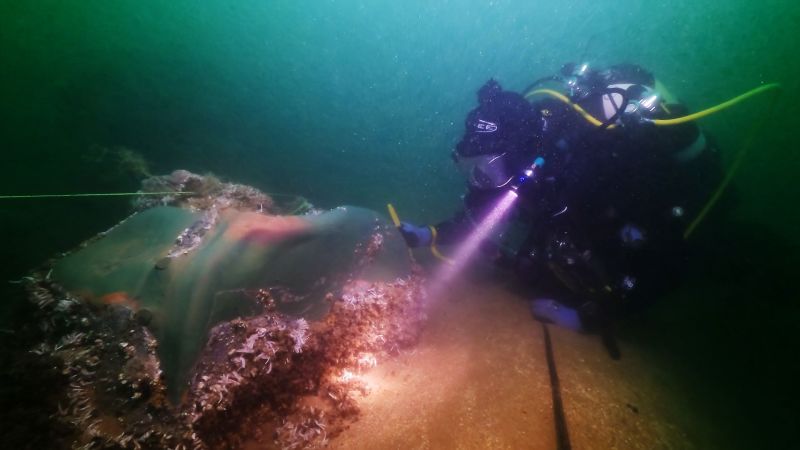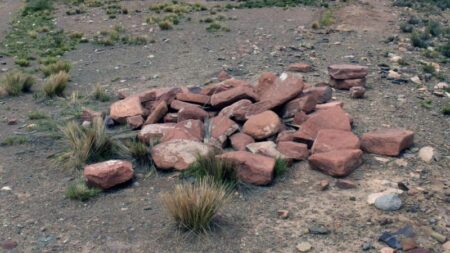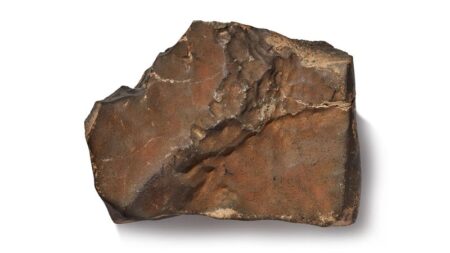Archaeologists currently find themselves in a critical race against time to thoroughly explore the wreck of an English warship, Northumberland, which sank over three centuries ago during a colossal storm. This remarkable vessel, a 70-gun warship, was constructed in Bristol, England, in 1679. Northumberland was part of a broader initiative spearheaded by Samuel Pepys, a notable figure now primarily recognized for his detailed diaries. Pepys’ work significantly contributed to the transformation of the English navy, evolving it from a notoriously corrupt entity to a formidable naval power.
The tragic fate of the Northumberland unfolded during the Great Storm on November 26, 1703. This catastrophic weather event led to the ship’s demise off a sandbank along the coast of Kent, southeast England. In addition to Northumberland, three other warships — Restoration, Stirling Castle, and Mary — also suffered catastrophic damage in the storm. Historical records indicate that approximately 250 members of the crew perished with the ship, marking a significant loss for the navy at the time.
The wreck of Northumberland was initially discovered in 1979, when a fisherman’s net became inadvertently snagged on its remains. Since its discovery, the ship has remained largely concealed beneath layers of sand and seabed sediment, which have preserved it for centuries. However, there are concerns that continued covering may hinder further explorations. Last summer, conditions allowed around two-thirds of Northumberland to be uncovered, giving maritime archaeologists a precious opportunity to conduct in-depth explorations of the wreck.
Subsequent detailed surveys of the wreck revealed a wealth of artifacts, including extensive remnants of the hull, several iron cannons, swords, muskets, copper cauldrons, and sealed chests whose contents continue to be a mystery. According to Historic England, the preservation of the ship is precarious, given that it is now exposed to the elements. The organization has emphasized the urgent necessity to document the details of Northumberland before shifting sands completely obscure the wreck again. Strong water currents and the presence of wood-boring marine life further exacerbate the instability and degradation of the ship.
Hefin Meara, a maritime archaeologist affiliated with Historic England who oversaw the recent survey, articulated the significance of the wreck’s location in both its discovery and the current threats it faces. He noted the dynamic nature of the Goodwin Sands, describing the area as characterized by significant sand dune movements. These dunes can expose the wreck for a time before burying it again, creating an unpredictable cycle that has resulted in the ship being occasionally visible and then obscured for decades.
The wreck’s dimensions suggest that while a portion measuring approximately 98 feet (30 meters) is currently exposed, the entirety of the Northumberland could have stretched around 150 feet (46 meters) when originally constructed. Continuous exposure and burial over three centuries have led to a dispersion of the wreck within the surrounding area. The archaeological team intends to conduct further geophysical surveys to optimize the exploration while Northumberland remains accessible, acknowledging that rapid sand recovery could soon envelop it once more.
Meara described the significance of shipwrecks like Northumberland, which encapsulate evidence of a singular moment in maritime history. This particular wreck offers a unique glimpse into life aboard a warship during a pivotal period of naval expansion. Historic England has underscored the opportunity this wreck presents to learn valuable insights regarding naval life during its time.
Celebrated historian Dan Snow has highlighted the wreck in a forthcoming documentary for his streaming service, History Hit. Through a press release issued by Historic England, Snow equated Northumberland to the wreck of the Mary Rose, a ship commissioned during the reign of Henry VIII, which sunk in 1545, and HMS Victory, the world’s oldest surviving commissioned warship. Snow asserted that Northumberland serves as a “missing link” between these significant historical vessels. He pointed out that built between the eras of the Mary Rose and HMS Victory, Northumberland could provide crucial insights into shipbuilding practices and life at sea during an essential period in British maritime history.
In summation, the ongoing exploration of Northumberland presents a rare opportunity to uncover and understand the complexities of naval history from a bygone era. However, as time presses on, the urgency to document and study the wreck grows ever more critical in the face of natural degradation and potential burial.












